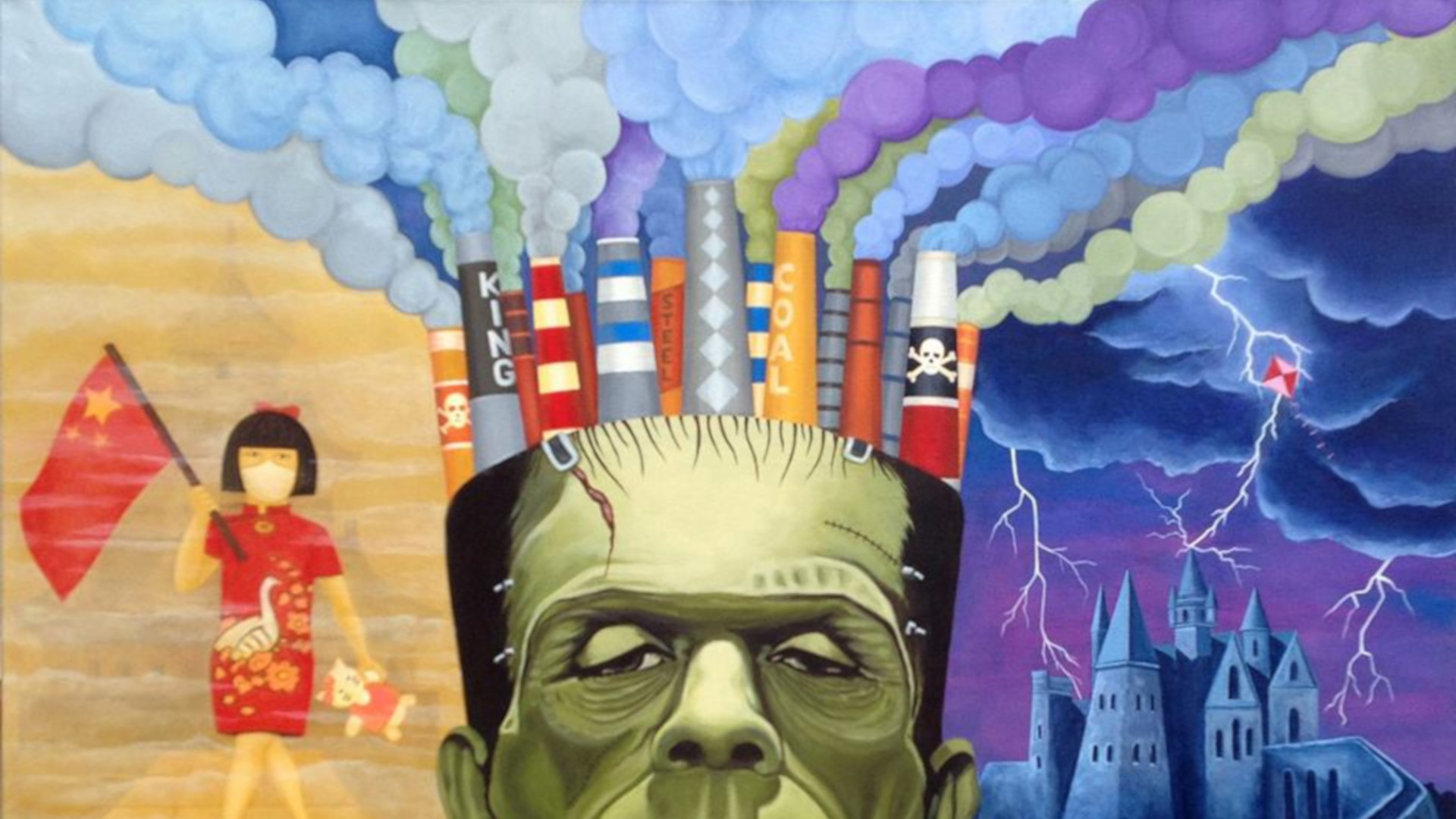Sometimes the latest bad environmental news makes us want to scream like someone in a horror movie who’s just come face to face with Frankenstein’s monster.
Frankenstein’s monster isn’t too happy about the news, either.
Neither are the Creature from the Black Lagoon, King Kong, Chucky or other horror-movie monsters who appear in a recent set of paintings by artists Gary and Laura Dumm of Cleveland, Ohio.
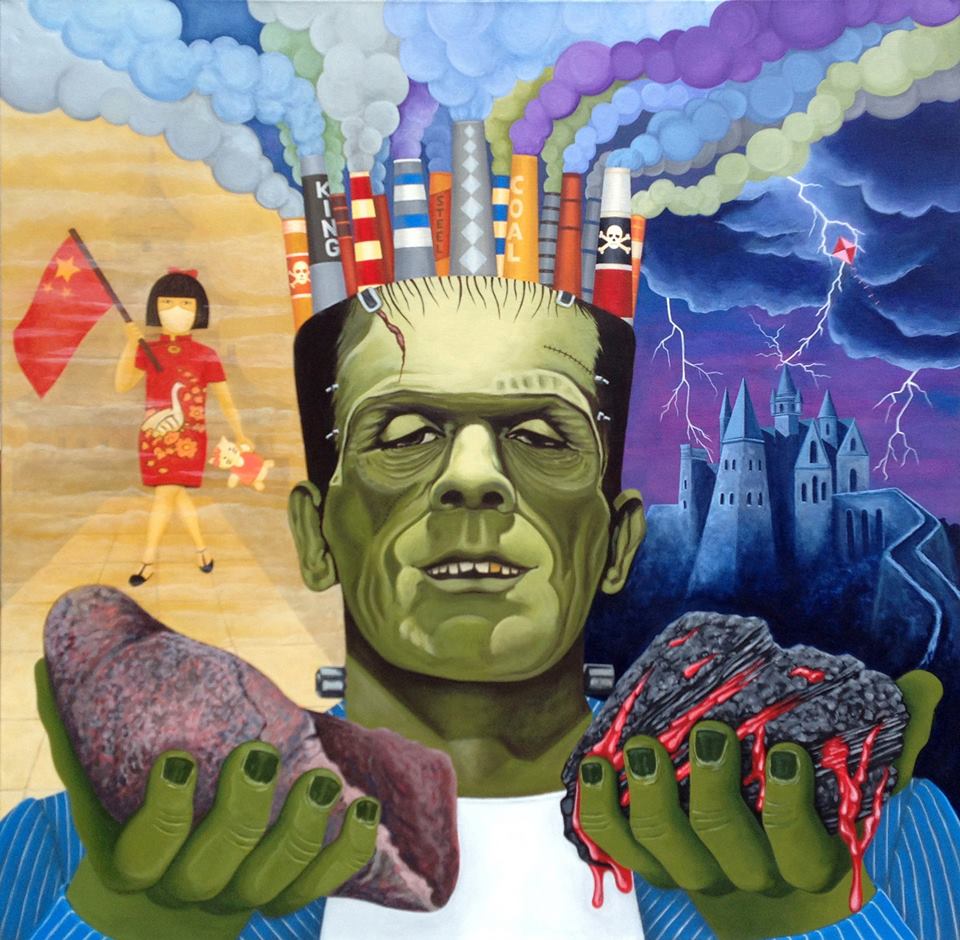
The paintings — exhibited as the “Here There Be Monsters” series — depict the iconic characters surrounded by smog, pesticides, plastic pollution, oil, fracking flames and soon-to-be extinct species.
It’s a quirky, powerful series of paintings created by a duo with a long history of commenting on society through their work. Gary, 71, is a cartoonist and graphic novelist perhaps best known for his decades-long collaboration with “American Splendor” writer Harvey Pekar. Laura, 68, is a pop-art painter whose work often touches upon issues related to animals or social rights. Together they’ve worked together on numerous projects, with their environmental series being one of their most striking.
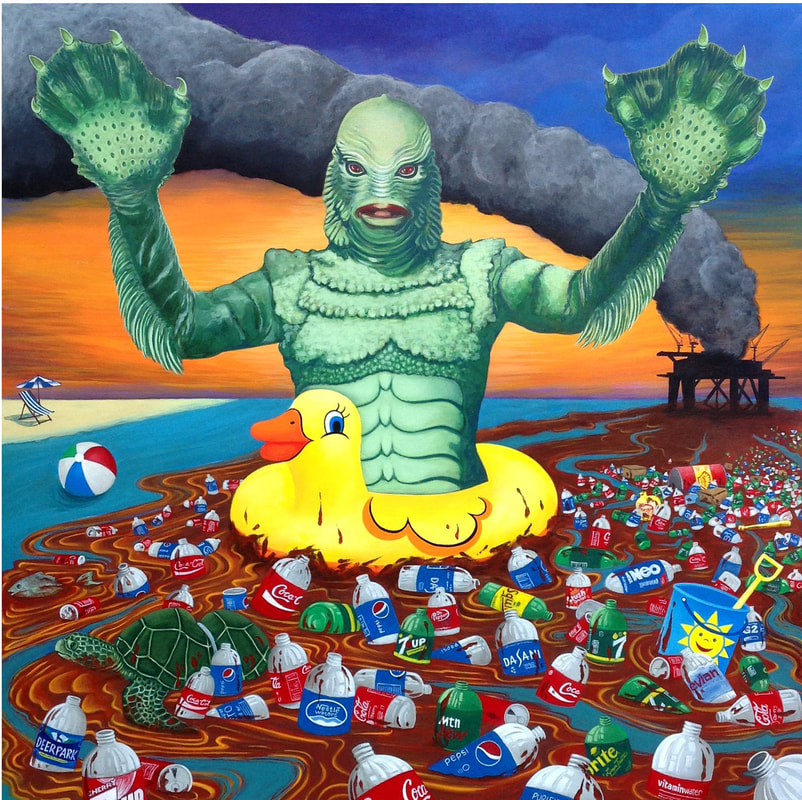
We contacted the Dumms to talk about protest art and their look at the real-life monsters affecting the environment.
What inspired you to develop this monstrous series?
Gary: We were looking for a way to do some serious collaborative works about the environment, and Laura first suggested doing a series about bugs and how certain issues like pesticide overuse were affecting them and the environment. We tried our damnedest to come up with something viable, but nothing was working well enough…until I came up with the broader idea of using classic horror monsters from movies as the main characters. Thinking about the fact that most of the monsters were failed scientific experiments made them a good match as recognizable vehicles for expressing some complex ideas. We agreed that these icons could be the “hook” to draw in viewers and also be the messengers for things that we had to say about threats to our environment. And the addition of humorous touches, to leaven the serious subject matter, has proven to be both popular and thought provoking in peoples’ reactions to this series.
Did you have any challenges in completing the series?
Laura: The only challenge is the usual one: coming up with good ideas that resonate with both of us. There’s lots of research, thinking, discussion and sketching done to get each resulting piece to say what we want in a manner that simultaneously strong while not being a diatribe. We feel that we’ve come up with some wonderfully surrealistic and humorously bizarre paintings that hopefully resonate and stay with most viewers. Unfortunately, it appears that there are still too many dire subjects left for us to tackle about the future of our planet. We won’t be short of subject matter.
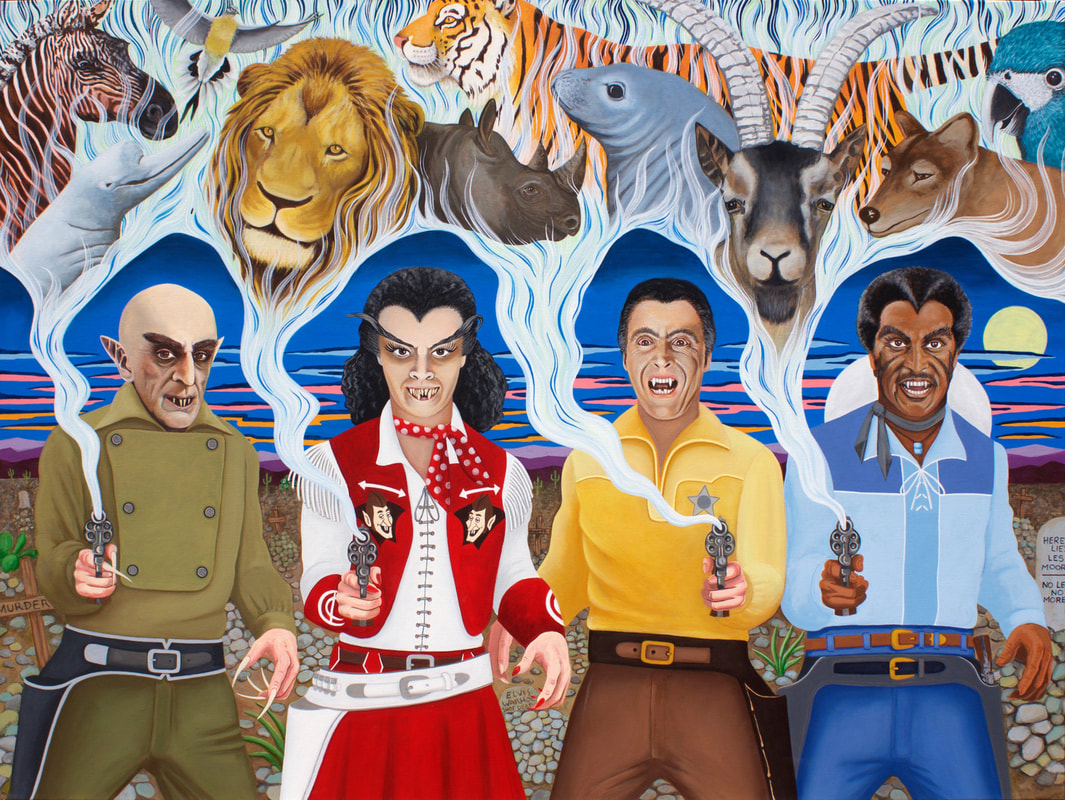
What do you hope viewers will learn or experience through this work?
Gary: We hope to inform the public. When someone looks at any of the paintings they are first attracted by the monster or the color. After they stop, read the title, enjoy the monster, then they focus on the message and hopefully a conversation will follow. We had one person tell us he “doesn’t buy water in plastic anymore because of our painting.” One college-educated person had no idea what GMOs or Monsanto were. After talking about our “Scream of the Butterflies,” she did more research and became more informed.
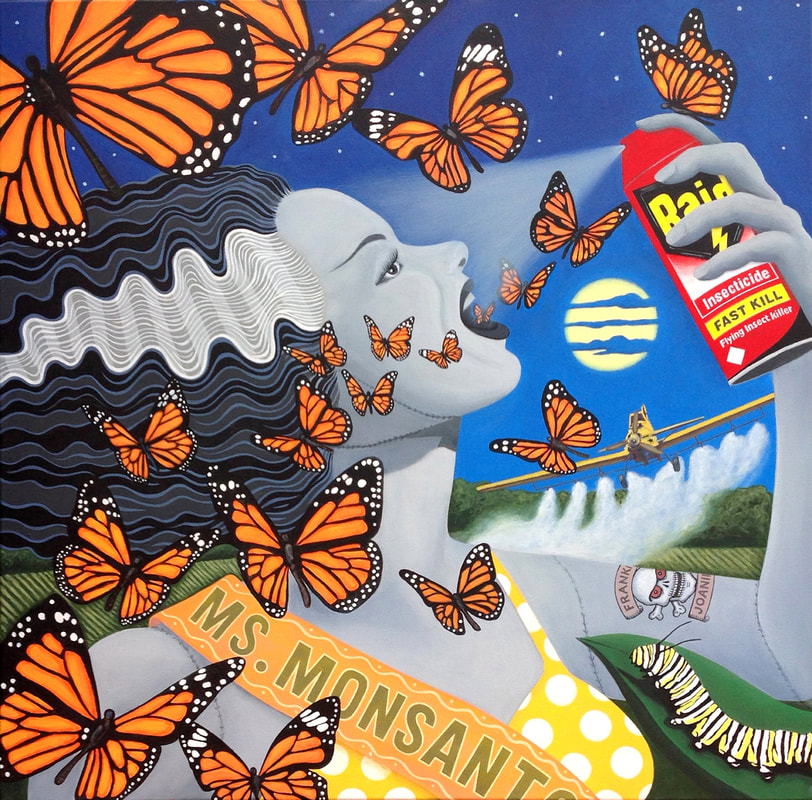
What comes next — for this series, or for you?
Laura: We do love collaborating for a cause, so when the right ideas hit us we will make time to continue this series.
To see the Dumms’ entire “Here There Be Monsters” series, or to view more of their work, visit DummArt.
![]()

